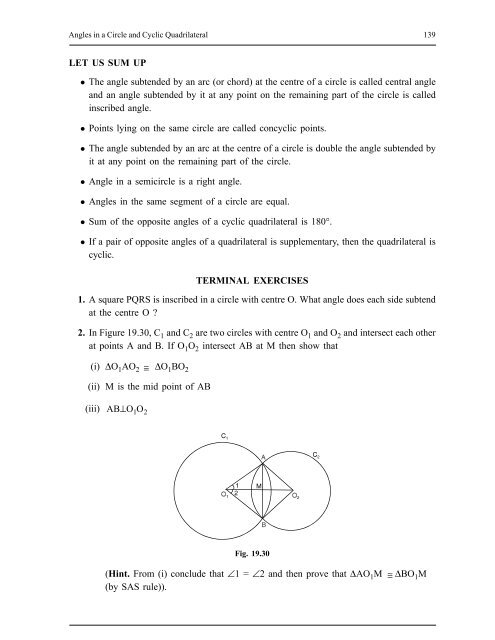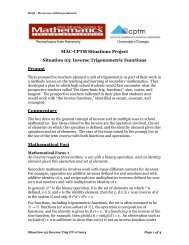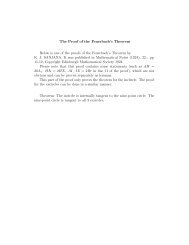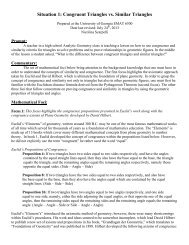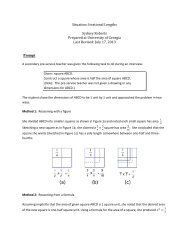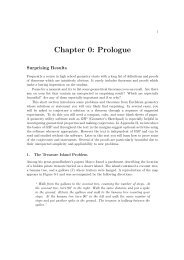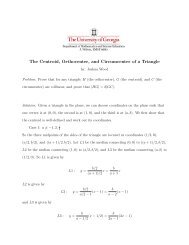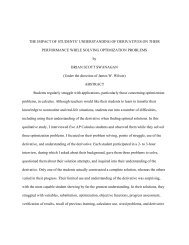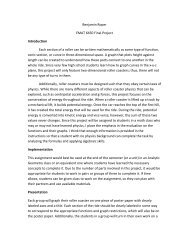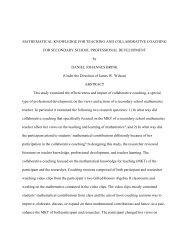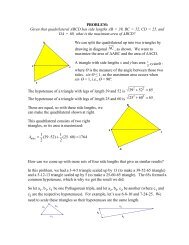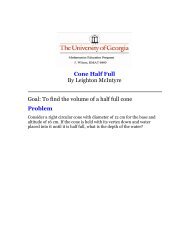Angles in a Circle and Cyclic Quadrilateral
Angles in a Circle and Cyclic Quadrilateral
Angles in a Circle and Cyclic Quadrilateral
Create successful ePaper yourself
Turn your PDF publications into a flip-book with our unique Google optimized e-Paper software.
<strong>Angles</strong> <strong>in</strong> a <strong>Circle</strong> <strong>and</strong> <strong>Cyclic</strong> <strong>Quadrilateral</strong> 139<br />
LET US SUM UP<br />
• The angle subtended by an arc (or chord) at the centre of a circle is called central angle<br />
<strong>and</strong> an angle subtended by it at any po<strong>in</strong>t on the rema<strong>in</strong><strong>in</strong>g part of the circle is called<br />
<strong>in</strong>scribed angle.<br />
• Po<strong>in</strong>ts ly<strong>in</strong>g on the same circle are called concyclic po<strong>in</strong>ts.<br />
• The angle subtended by an arc at the centre of a circle is double the angle subtended by<br />
it at any po<strong>in</strong>t on the rema<strong>in</strong><strong>in</strong>g part of the circle.<br />
• Angle <strong>in</strong> a semicircle is a right angle.<br />
• <strong>Angles</strong> <strong>in</strong> the same segment of a circle are equal.<br />
• Sum of the opposite angles of a cyclic quadrilateral is 180°.<br />
• If a pair of opposite angles of a quadrilateral is supplementary, then the quadrilateral is<br />
cyclic.<br />
TERMINAL EXERCISES<br />
1. A square PQRS is <strong>in</strong>scribed <strong>in</strong> a circle with centre O. What angle does each side subtend<br />
at the centre O <br />
2. In Figure 19.30, C 1 <strong>and</strong> C 2 are two circles with centre O 1 <strong>and</strong> O 2 <strong>and</strong> <strong>in</strong>tersect each other<br />
at po<strong>in</strong>ts A <strong>and</strong> B. If O 1 O 2 <strong>in</strong>tersect AB at M then show that<br />
(i) ∆O 1 AO 2 ≅ ∆O 1 BO 2<br />
(ii) M is the mid po<strong>in</strong>t of AB<br />
(iii) AB⊥O 1 O 2<br />
Fig. 19.30<br />
(H<strong>in</strong>t. From (i) conclude that ∠1 = ∠2 <strong>and</strong> then prove that ∆AO 1 M ≅ ∆BO 1 M<br />
(by SAS rule)).


